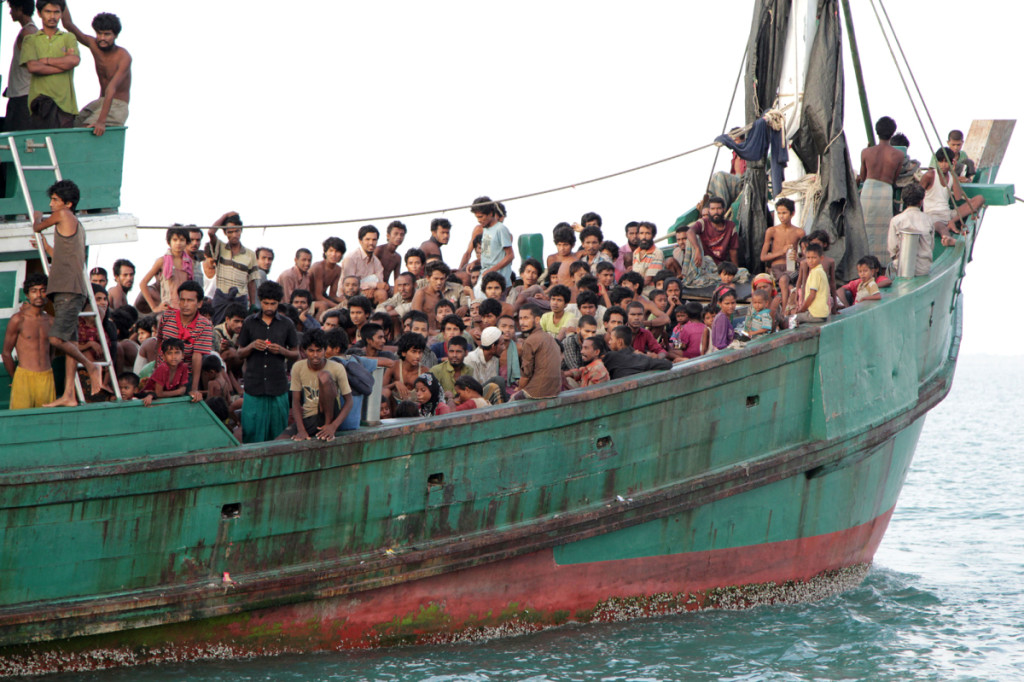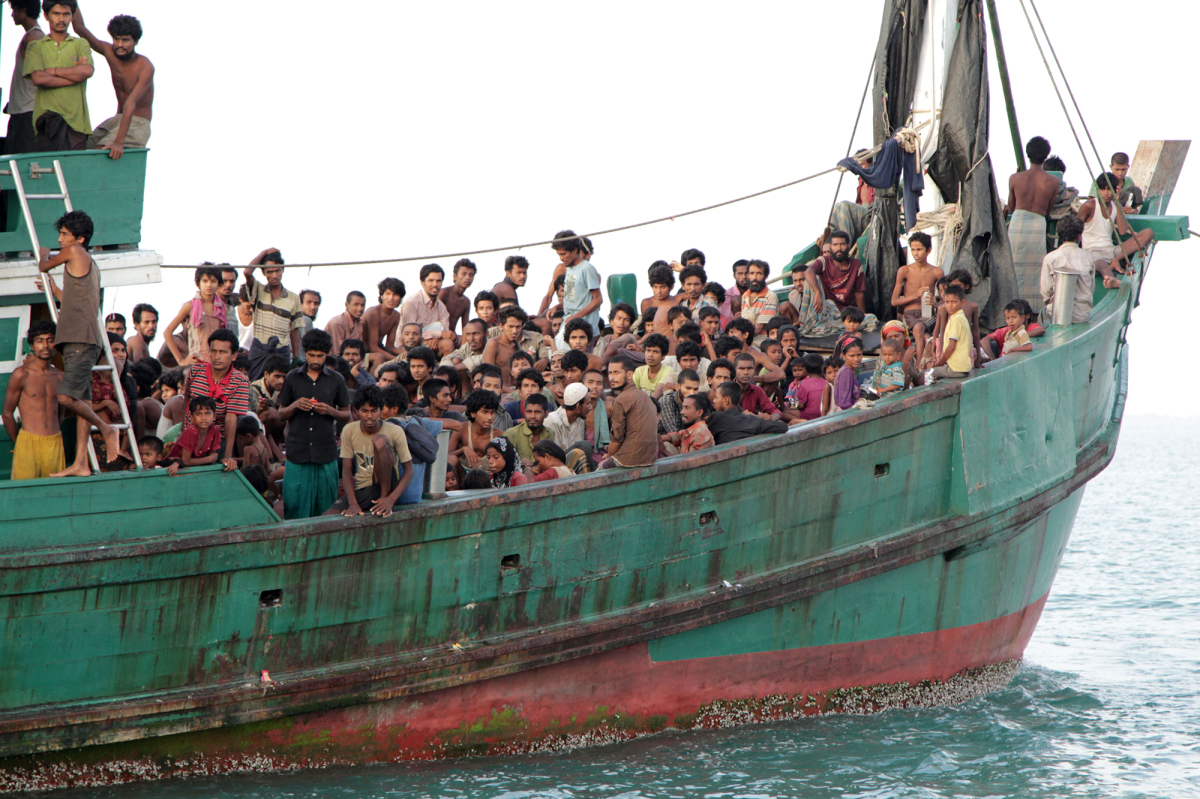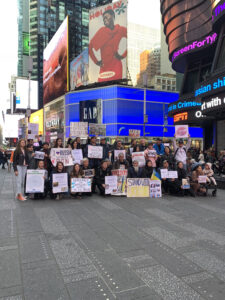A Mediterranean-Style Crisis for the Andaman Sea?

Migrants stranded in the Andaman Sea in May. Picture by S. Yulinnas | AP

Although the Rohingya have been persecuted for decades, Buddhist monks began systematically killing them in 2012. Since then, almost half a million Rohingya have either fled or live in camps inside the country, enough to make their plight a topic for the 70th session of the UN General Assembly, especially since the global refugee crisis was on the agenda for the opening session on Sept. 15. But with the Mediterranean and Syrian crises looming so large, there has been no special mention during the first conferences of the General Assembly of the situation in Myanmar, even though it is listed among the top ten source countries of refugees.
The Rohingya are a Muslim ethnic group from the Rakhine state, the westernmost state of Myanmar. They are among nearly half a million refugees who had fled Myanmar by the end of 2014. Human trafficking networks have provided one of their only ways out of the country and many have died along the way. The recent “boat crisis” last May and the subsequent discovery of mass graves along the Thai-Malaysian border brought media attention to the issue, but no action.
And yet the Andaman Sea could easily become the site of another Mediterranean-style refugee crisis. In 2014, 58,000 people embarked in irregular journeys from the Bengal Bay, most of them Rohingya; in the first quarter of 2015, an estimated 25,000 people more put their lives in the hands of human traffickers who cram them onto tiny Thailand-bound boats. There, they wait for days in the jungle for someone to pay a release fee in order to cross the border to Malaysia. Hundreds die on the trip every year.
Those who don’t die at sea or whom the smugglers don’t abandon in the jungle face a life in the shadows, as illegal immigrants. Malaysia is not a signatory of the 1951 U.N. Convention on Refugees or its 1967 Protocol and doesn’t recognize asylum seekers.
A senior UNHCR official in Kuala Lumpur said the U.N.’s refugee agency in Malaysia is now prioritizing the registration of Rohingya refugees. But with upwards of 9,000 refugees in detention in Malaysia in any given day, their reach is limited. The process for receiving a card from the UN High Commission for Refugees is lengthy and cumbersome and will not necessarily guarantee security. Although most police officers will respect the refugees registered in the U.N. agency, several refugees explain they have been deported to the Thai border despite the card. And on top of that, the UNHCR official said the crisis in Syria has diverted resources, leaving less funding for the crisis in the Andaman Sea.
There isn’t much hope for humanitarian aid efforts in Myanmar. Government authorities often block access to aid agencies, and the operations are chronically underfunded. As Samir Mahmoud, Humanitarian Affairs Officer in the Central Emergency Response Fund at the UN, explained, the funds come from national donors, and operations that aren’t getting a lot of media attention are more difficult to sell to tax payers; more complicated to make them relevant for the donors. After all, these countries look for their national interests, Mahmoud said. The refugee crisis in the Mediterranean is closer to most of the donor’s homes than the one in the Andaman Sea.
A few months after the killings started in Rakhine state in 2012, Myanmar President Thein Sein, was invited to the General Assembly for the first time. It was an historic moment for Myanmar, coming out of a brutal dictatorship. Thein Sein’s address was a sign of the fast-tracked transition to democracy and a symbol that Myanmar was now welcome in the international arena. “The people inhabiting in our country, regardless of race, religion and gender, have the rights to live in peace and security,” Sein told the Security Council. His reference to the violence against the Rohingya seemed in tune with this new democratic spirit.
But violence has only increased since. In 2013 and 2014, the Assembly’s human rights committee issued a resolution to urge Myanmar to grant citizenship to Rohingya and stop the violence. Myanmar hasn’t abided, arguing that the international community should not interfere with their national politics.
And yet, if policies in Myanmar don’t change, human trafficking will continue. As Malaysian politician Charles Santiago explained, the Association of Southeast Asian Nations need to be more forceful and put pressure on Myanmar, but given the nature of the association it is unlikely to happen. “It’s going to be another Mediterranean situation,” said Santiago. Founded during the Cold War, the ASEAN bloc has a non-interference policy, meaning that each country is responsible for what happens inside its own borders. But the violence in Myanmar is now spilling over into neighboring countries.
There seems to be little space on the U.N. agenda for the thousands of refugees who are risking their lives in the Andaman Sea. “There is no economic interest, no major goal,” said Shamsul, who has spent most of his life running from government authorities that don’t recognize him—first in Myanmar, then Bangladesh, now Malaysia. “The Burmese authorities are not going to stop until they kill all of us. And no one cares.”
Mireia is the Editor-in-Chief at JPI. She’s a Fulbright scholar pursuing an M.A. in International Relations and Journalism at New York University.







1 thought on “A Mediterranean-Style Crisis for the Andaman Sea?”